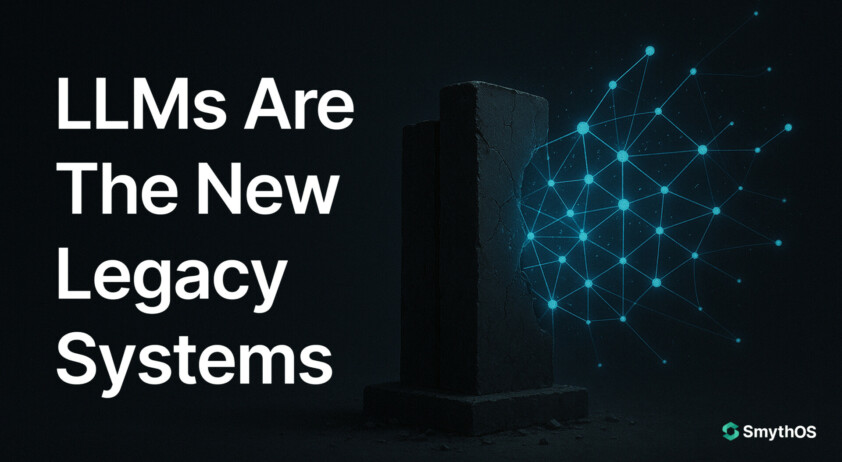For the last few years, the AI world has worshipped the Large Language Model. Every headline, every demo, every funding pitch seemed to start with, “Now powered by an LLM.”
And it worked. Until it didn’t.
Today, the truth is simple: LLMs are becoming the legacy systems of AI.
They are static, expensive to retrain, and blind to context. They can generate words, but they cannot explain their reasoning or respect your governance boundaries.
At SmythOS, we see this shift up close. We are building the open-source operating system for agentic AI, a platform where agents reason, collaborate, and act under governed, explainable context. It is not about bigger models anymore. It is about smarter systems that think together.
From Model Obsession to System Intelligence
We have seen this pattern before. In the early 2000s, enterprises poured resources into huge monolithic applications. Then, the world moved on to microservices: modular components that scaled and evolved faster than any single system could.
AI is repeating history. The monolithic LLM is today’s equivalent of the enterprise mainframe, powerful but rigid and opaque.
Agentic systems are the microservices of intelligence. They combine reasoning, memory, and context dynamically, governed by policy and purpose. That is the heart of SmythOS.
Why “Bigger” Isn’t “Better”
Enterprises do not fail because their models are too small. They fail because their systems lack structure and trust.
An LLM can talk beautifully, but it cannot guarantee the truth of its words. It cannot show the provenance of its output or confirm that it followed compliance boundaries. That is not intelligence, that is improvisation.
SmythOS fixes this by transforming raw retrieval into context orchestration, a governed reasoning process where every decision is traceable.
The Context Engineering Lifecycle
We believe the next evolution of AI is not just RAG 2.0. It is Context Engineering: the discipline of managing what an agent knows, remembers, and reasons about.
At SmythOS, we define this as a lifecycle of four stages:
- Write – Agents capture new knowledge and persist useful insights after each task.
- Compress – They summarize and embed information, keeping context light but meaningful.
- Isolate – Each agent sandboxes its context to prevent contamination between workflows.
- Select – When reasoning, the agent retrieves only the most relevant, policy-approved data.
This is not retrieval. It is responsible reasoning. It turns context into a living system that is explainable, auditable, and adaptable.
Governance Is the New Innovation
For years, “move fast and break things” defined progress. In AI, that approach breaks trust.
True innovation comes from systems that respect boundaries while staying creative. That is why SmythOS is open source by design. Transparency builds accountability, and community builds resilience. Our code is visible, our semantics are explainable, and our governance is enforceable.
You cannot govern what you cannot see. And you cannot trust what you cannot trace.
The Future Belongs to Systems That Think Together
The LLM era gave AI its voice. The agentic era will give it judgment.
We are moving from models that answer to systems that reason. From chatbots that react to agents that understand purpose, context, and consequence.
At SmythOS, we are not chasing bigger benchmarks. We are building the foundation for governed intelligence: systems that are modular, auditable, and open for everyone to build on.
The future of AI will not belong to whoever trains the biggest model. It will belong to whoever builds the smartest, most trustworthy system.
Join the SmythOS open-source community and help forge the future of governed, agentic AI.
While you’re there, don’t forget to star our GitHub repo to show your support and help others discover SmythOS.
